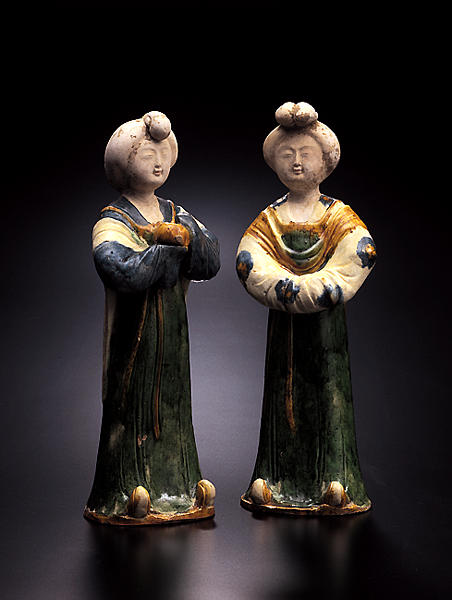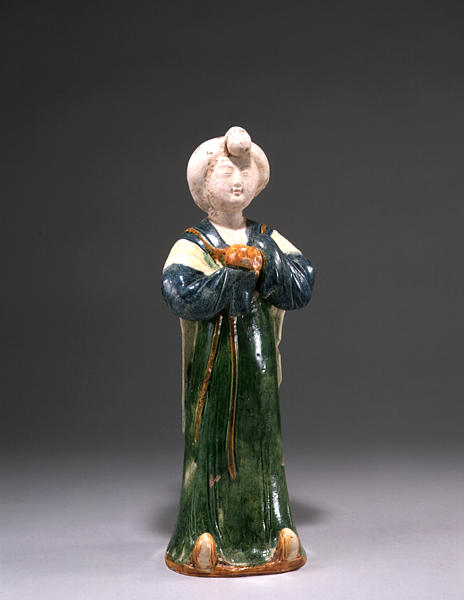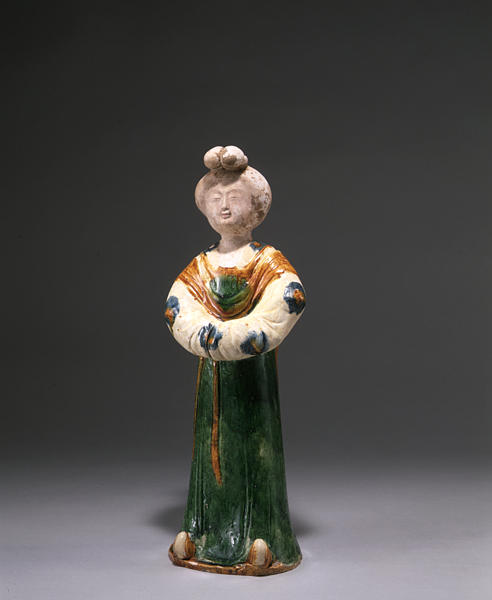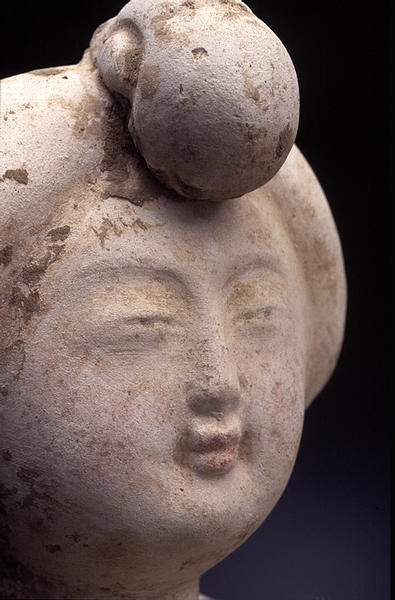Two Standing Court Women
- China
- China, Tang period
- 8c
- Ceramic with three-color glaze
- H-33.7
Catalogue Entry
The evolution of tomb figures is well documented by the abundance of recently excavated material. During the early part of the Tang dynasty (A.D. 618-907), clothing and coiffure styles popular during the previous Sui dynasty (A.D. 581-618) were still favored and featured on the narrow-hipped, slender-faced female tomb figures (compare cat. no. 127). By the eighth century, though, full-figured women with voluminous hairstyles were in vogue. Historical records list the wide variety of popular hairdos bearing such picturesque names as "the happy-traveling bun," the "worried bun," the "obedient bun," and the "alerted swan bun."1 Different versions of the "half-tuned bun" appear on the two full-figured Shumei tomb figures.
One tomb figure is slightly taller than her companion. Both wear a dress ensemble common during the Sui dynasty, but the eighth-century version features a jacket with wider sleeves. The empire-waisted design, cinched by a ribbon, perfectly accommodates a more expansive figure. By this time a cape, usually made of light, thin gauze and featuring either hand-painted or printed motifs, had become a popular addition to a lady's ensemble. These scarf-like capes, often measuring more than two meter longs, were draped over court women's shoulders and twined around their arms.2
The face and neck of each of the figures are unglazed. The hair, eyebrows, and eyes have been painted black and the lips touched with red. Both figures' dress ensembles are glazed in hues of green, brown, indigo, and white glazes. The taller figure's jacket features a pattern resembling the tie-dyed material that became popular during the Tang period. Early examples of tie-dyed fabric, more than likely from the West, have been excavated from fourth century tombs at Astana in Xinjiang province.3
Both figures' hands are concealed by voluminous jacket sleeves; however, the shorter figure's sleeves are raised to hold a small package. Both figures wear shoes with turned-up toes, favored foot apparel during Tang times.
Many tombs containing plumper female tomb figures have been excavated in Shaanxi province. Prefiguring them all, though, were female tomb figures excavated near Qiaoling, and dating from 684.4 The tomb of Princess Yong Tai (died in 701), also contained a plump, three-color-glazed female tomb figure, and a chubby three-color female figure was excavated from the Kai Yuan tomb near Xi'an.5 The Shumei female tomb figures featured here are dated slightly later than the female tomb figure with a dog (cat. no. 129).
HK
1. Zhou and Gao 1987, p.84.
2. Ibid., p.88.
3. 5000 Years Committee 1992, p.109.
4. Dait h no hana 1996, pl. 30.
5. Ibid., pl. 53.



